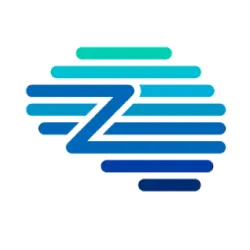Category management in procurement is a game-changer in procurement, offering a strategic framework to maximize efficiency and drive significant cost savings. As highlighted by McKinsey in their 2022 report, better supplier segmentation helped improve negotiation outcomes, raising margins on addressable spend categories by 10 to 20 percent.
This guide delves into the fundamentals of category management in procurement, specifically within procurement, providing practical insights for implementation and highlighting its transformative impact on businesses.
TL;DR
- Category Management is a strategic procurement approach that groups similar goods or services into categories to drive efficiency, cost savings, and risk mitigation through better supplier management and sourcing alignment.
- Why It Works: Category management aligns procurement with business goals, enabling smarter spend segmentation, supplier collaboration, and improved negotiation outcomes—boosting margins by 10–20%, per McKinsey.
- Benefits Beyond Cost: It improves supplier performance, standardizes procurement processes, and enhances data-driven decision-making while minimizing risks through dual sourcing and contingency plans.
- Retail Angle: In retail, category management helps optimize shelf space, drive promotions, and improve customer satisfaction through targeted product assortments and ABC analysis.
- Continuous Value Driver: Category management is not a one-time fix—it requires continuous performance monitoring and refinement to unlock long-term procurement transformation and EBITDA growth.
Understanding Category Management
What is Category Management?
In procurement, category management involves strategically managing groups of similar products or services (categories) to achieve specific business objectives, such as reducing costs, improving quality, or mitigating risks.
Overview Video: Unlock Smarter Procurement with Category Management
Before diving into strategies and best practices, get a quick overview of how Zycus helps organizations drive efficiency, cost savings, and smarter sourcing decisions with its intelligent category management solution.
Evolution of Category Management
Initially developed in the retail sector, category management has evolved into a crucial practice in procurement. Its widespread adoption is driven by its ability to:
- Optimize sourcing processes
- Negotiate favorable contracts
- Enhance supplier relationships
Crafting a Category Management Strategy
- Objective of a Category Management Strategy: A comprehensive strategy entails aligning category management procurement objectives with overarching procurement goals and organizational priorities. For example, a company aiming to reduce overall office supplies spend by 15% to align with cost-reduction targets can leverage procurement category management to achieve this goal.
- Category Segmentation: Segmentation methods such as spend analysis, market analysis, and supplier segmentation help prioritize categories for strategic focus and ensure effective resource allocation.
- Supplier Relationship Management: Building strong partnerships with key suppliers within each category is essential for category management success. Strategies may include supplier collaboration, performance-based contracting, and supplier development initiatives.
Benefits of Category Management in Procurement
Cost Savings and Enhanced Procurement Efficiency:
Effective category management streamlines sourcing processes, reduces cycle times, and optimizes inventory levels, leading to substantial cost savings and improved operational efficiencies. By leveraging economies of scale, strategic sourcing practices, and supplier negotiations, organizations can achieve significant cost reductions within each category.
Risk Mitigation:
Category management enables proactive risk identification and mitigation strategies, such as dual sourcing, supplier diversification, and contingency planning, to minimize supply chain disruptions.
Enhanced Supplier Management and Collaboration:
- Supplier Consolidation: Organizations can leverage economies of scale and negotiate more favorable contracts by strategically selecting and collaborating with a smaller pool of high-performing suppliers within each category.
- Improved Supplier Performance: Category management fosters closer relationships with suppliers, enabling collaboration on innovation, quality improvement initiatives, and joint cost reduction strategies.
- Reduced Risk of Supply Disruptions: Diversifying suppliers within a category and building strong partnerships mitigate the risk of disruptions caused by single-source reliance.
Solution: Check out our supplier information management software – iSupplier
Improved Decision-Making and Strategic Sourcing:
- Data-Driven Insights: Procurement category management leverages spend analysis data to identify sourcing opportunities, optimize procurement strategies, and make informed decisions based on real-time market intelligence.
- Standardized Processes: Implementing consistent sourcing processes across categories streamlines procurement activities, reduces errors, and ensures compliance with internal policies and external regulations.
- Improved Category Expertise: Category management fosters the development of category-specific expertise within procurement teams, leading to more informed sourcing decisions and better negotiation leverage.
Impact of Category Management on Key Procurement KPIs
| KPI | What It Measures | Improvement Through Category Management |
|---|---|---|
| Cost Savings | Reduction in total spend across procurement categories | Leverages strategic sourcing, supplier consolidation, and economies of scale to drive significant savings |
| Procurement Cycle Time | Time required to complete sourcing and procurement activities | Streamlined workflows and standardized processes reduce delays and speed up decision-making |
| Inventory Efficiency | Balance between stock availability and storage costs | Enhanced demand planning and supplier alignment reduce excess inventory and stockouts |
| Supplier Performance | Supplier reliability, quality compliance, and responsiveness | Stronger supplier collaboration and performance-based contracts improve service levels |
| Risk Mitigation | Exposure to supply chain disruptions, price volatility, and compliance failures | Enables proactive risk planning through dual sourcing, market analysis, and diversified supply strategies |
| Strategic Decision-Making | Use of real-time data to inform sourcing, budgeting, and planning decisions | Data-driven insights empower informed, agile, and forward-looking procurement strategies |
| Compliance & Governance | Adherence to internal policies and regulatory requirements | Standardized category strategies ensure greater contract and policy compliance across all spend areas |
Overall Business Benefits:
- Improved Competitive Advantage: Category management can significantly enhance an organization’s competitive edge by optimizing procurement operations and reducing costs.
- Increased Focus on Strategic Initiatives: Freed from time-consuming tasks, procurement teams can dedicate more resources to strategic initiatives like supplier relationship development, innovation sourcing, and risk management solutions.
- Enhanced Transparency and Accountability: Category management fosters greater transparency across the procurement process, facilitating better decision-making and accountability.
Remember: Category management isn’t a one-time fix; it’s a continuous improvement process. By consistently monitoring performance, analyzing data, and refining strategies, organizations can unlock category management’s full potential and achieve sustainable success in procurement.
Category Management in Retail
Retail Category Management Overview: Applying category management principles in retail involves optimizing product assortments, enhancing in-store experiences, and maximizing sales potential, ultimately increasing customer satisfaction. By strategically managing categories, retailers can ensure they offer the products customers want when they want them.
Assortment Planning and Optimization:
Tailoring product assortments based on consumer insights, sales data, and market trends ensures optimal shelf space allocation and category performance. Common assortment planning techniques include:
- ABC analysis: This method categorizes products based on sales and profitability, helping retailers prioritize high-performing items and optimize inventory levels for less popular ones.
- Category clustering: Grouping similar products (e.g., cereals, laundry detergents) improves customer navigation and can encourage impulse purchases.
Additionally, space allocation tools help retailers optimize shelf placement for better product visibility and increased sales. Imagine placing high-margin items at eye level for maximum impact!
Promotional Strategies:
Designing targeted promotions, seasonal campaigns, and cross-selling initiatives boosts foot traffic, increases basket size, and fosters customer loyalty. Specific examples of promotional strategies used in category management include:
- Bundle discounts: These incentivize customers to buy more, like “Buy one get one free” offers.
- Limited time offers: Creating a sense of urgency with flash sales or “limited quantities available” promotions can drive sales.
- Loyalty program rewards: Rewarding customers for purchases with points or discounts encourages repeat business and brand loyalty.
For maximum impact, it’s important to integrate promotional strategies with other marketing channels, such as social media and email marketing, to create a cohesive customer experience.
Conclusion:
Category management is a strategic imperative for procurement organizations seeking to optimize efficiency and drive cost savings. By embracing category management principles and implementing tailored strategies, organizations can unlock efficiencies, mitigate risks, and achieve sustainable cost reductions in procurement operations.
The potential benefits extend beyond immediate savings, as McKinsey’s report found that even a 1% improvement in COGS can lead to an impressive 18% increase in EBITDA, significantly impacting profitability.
However, implementing category management can present challenges, such as overcoming internal resistance to change and managing complex supplier relationships. Successful implementation requires a well-defined plan, clear communication, and ongoing monitoring and adjustments.
Ready to unlock the power of category management in your procurement operations? Book a demo now to see how our robust category management solution can help you achieve significant cost savings and efficiency gains.
FAQs
Q1. What is category management in procurement?
Category management is a strategic approach to managing groups of related goods or services (categories) to achieve cost savings, reduce risk, and improve supplier relationships and sourcing efficiency.
Q2. How is category management different from traditional procurement?
Traditional procurement focuses on transactional purchasing, while category management uses data-driven strategies to manage spend by category, optimize sourcing, and align with business goals.
Q3. What are the key benefits of category management?
Benefits include significant cost savings, better supplier performance, reduced procurement cycle times, improved risk mitigation, and enhanced compliance through standardized processes.
Q4. What are the main steps in building a category management strategy?
Steps include spend analysis, category segmentation, supplier market analysis, strategy development, implementation, and continuous monitoring and refinement.
Q5. How does category management improve supplier relationships?
It enables more strategic engagement through performance tracking, supplier consolidation, and collaborative innovation—building long-term, high-value partnerships.
Q6. What tools or technologies support category management?
Category management is supported by tools like spend analysis software, supplier relationship management (SRM) platforms, contract management systems, and procurement analytics dashboards.
Q7. Is category management applicable beyond procurement?
Yes, category management principles are also widely used in retail, where they help optimize product assortments, pricing strategies, and promotional planning for better customer satisfaction and revenue growth.
Related Reads:
- How Digital Catalog Management is Transforming B2B Practices
- Why Your Business Needs a Category Management Strategy
- Embracing Generative AI in Category Management for Purchasing
- 8 Key Stages of Category Management Process: A Sneak Peek
- Video – Spend Right, Save More: Compliant Purchasing Guide | Zycus
- Optimizing the Procurement Process with eProcurement Solutions: A Comprehensive Guide
- Solution: Procurement Catalog Management Software
- Solution: eProcurement Software
- Solution: Generative AI for Transforming Procurement











































